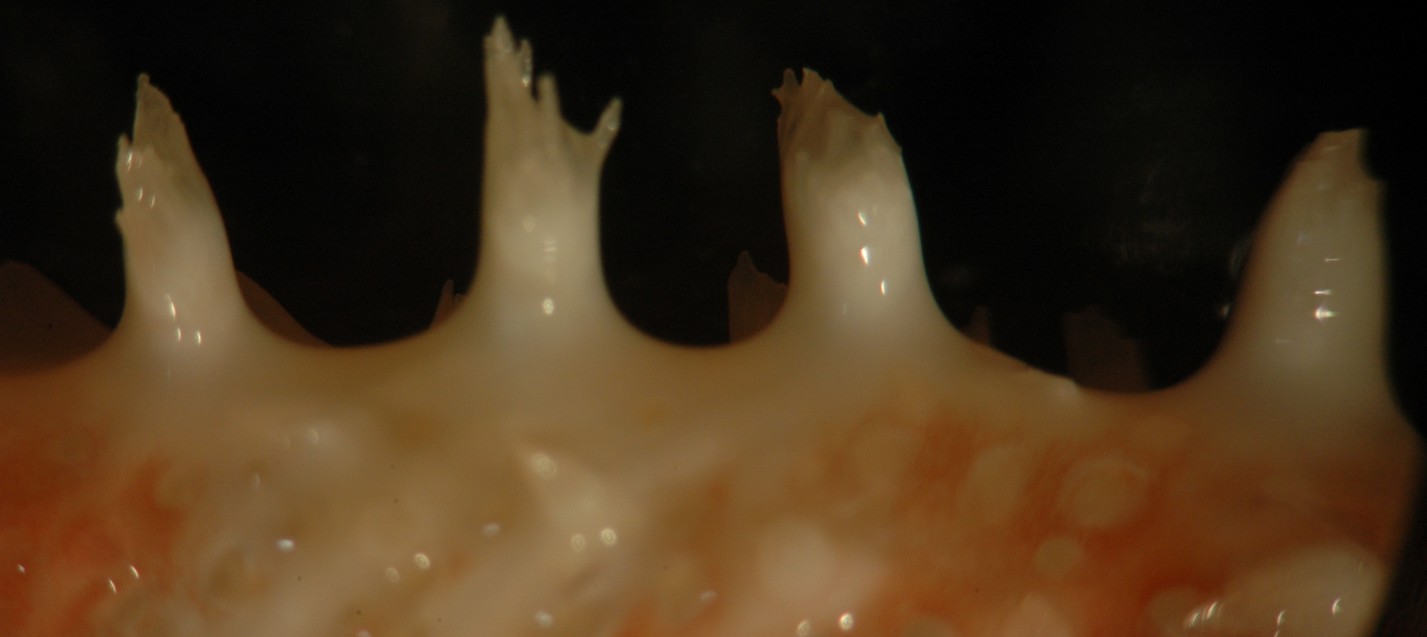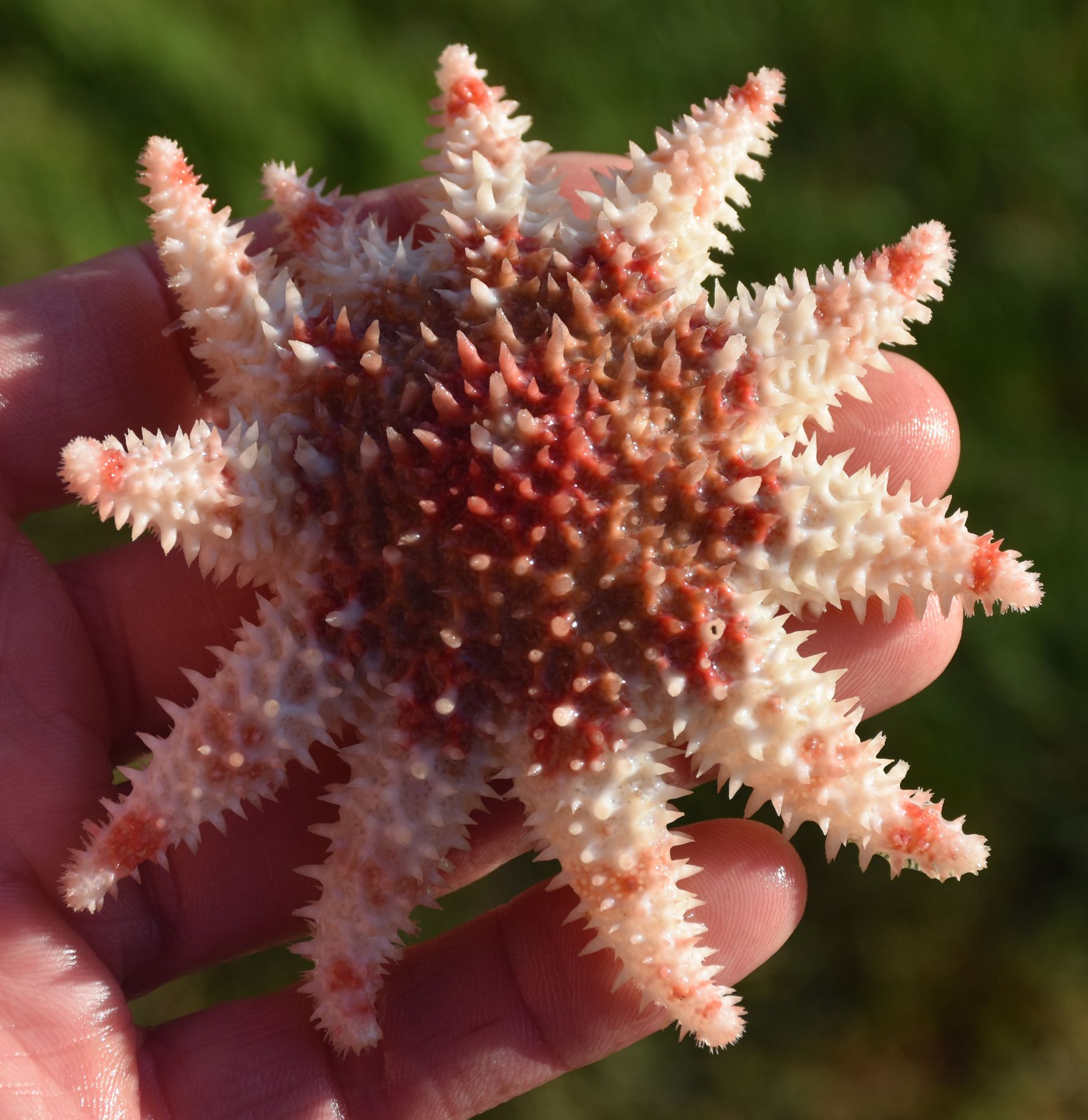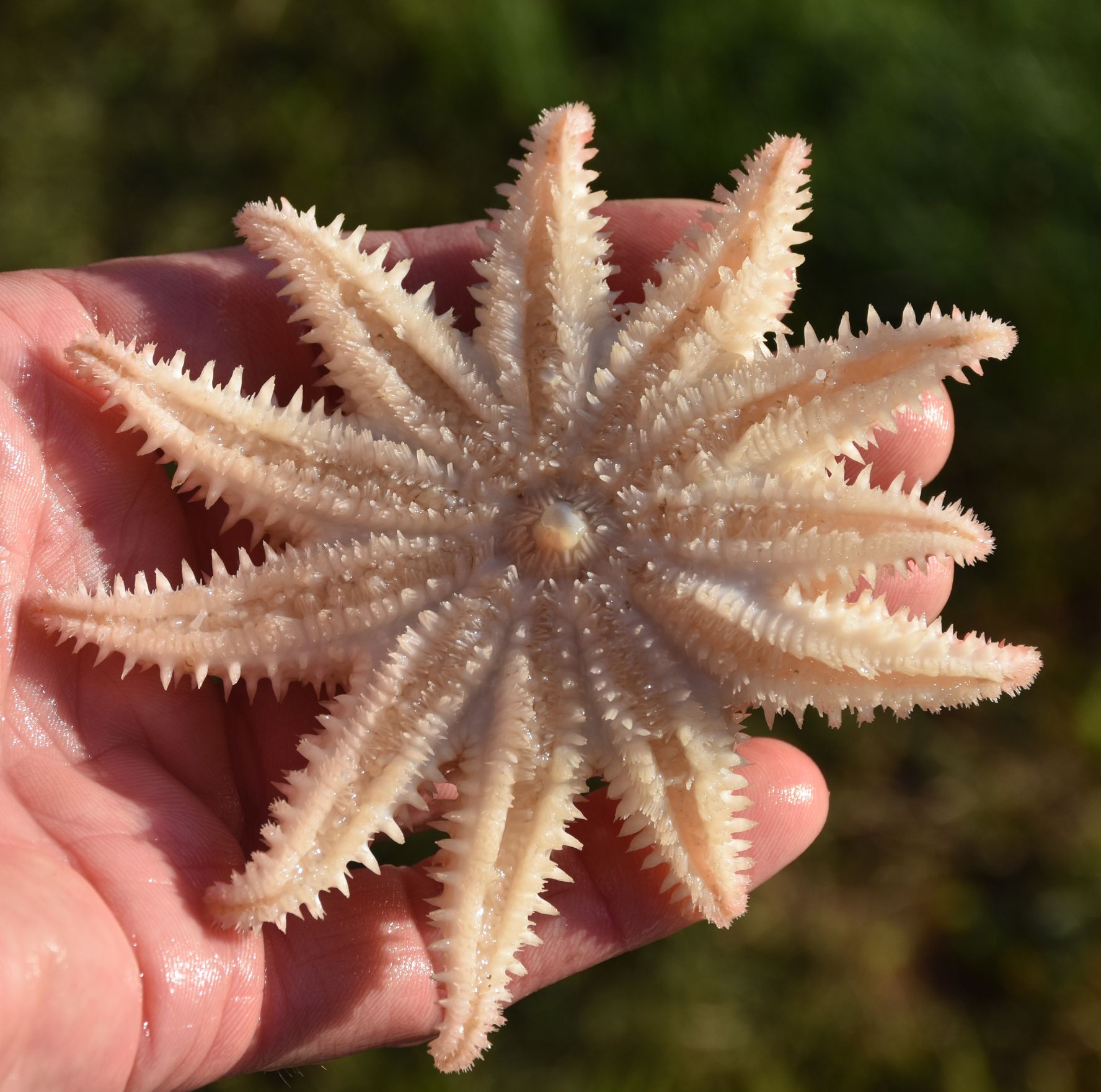Crossaster papposus (Linnaeus, 1767)Common name(s): Rose star, Snowflake star, Common sun star |
|
| Synonyms: |  |
| Phylum Echinodermata
Class Asteroidea Order Spinulosida Suborder Eugnathina Family Solasteridae |
|
| Crossaster papposus from 100 m depth trawl, San Juan Channel. Diameter approx. 20 cm | |
| (Photo by: Dave Cowles, July 2001) | |
How to Distinguish from Similar Species: Solaster stimpsoni and S. dawsoni have much smaller central disks in relation to their total diameter and do not have the abundant aboral spines nor this coloration. Pycnopodia helianthoides has more rays (when mature), grows larger, and has abundant pedicellariae, plus its rays are very flabby.
Geographical Range: Bering Sea to Puget Sound; Arctic Ocean, North Atlantic Ocean, North Sea, western Baltic sea (circumpolar)
Depth Range: Extremely low intertidal to 1200 m. Mostly subtidal.
Habitat: Varied.
Biology/Natural History: Diet includes sea pens, nudibranchs such as Archidoris odhneri and Coryphella sp, the scallops Chlamys hastata and C. rubida, bryozoans, and tunicates. Has been known to attack the seastar Evasterias troschelii and Leptasterias sp. Predators include the seastars Solaster dawsoni and Pycnopodia helianthoides. May have the symbiotic polychaete worm Arctonoe vittata. This species can move relatively fast for a seastar--up to 70 cm/minute. Spawns March to April. Juveniles often cluster subtidally in masses of the tubedwelling polychaete Phyllochaetopterus prolifica. Grow slowly--maximum size is achieved after about 10 years.
| Return to: | |||
| Main Page | Alphabetic Index | Systematic Index | Glossary |
References:
Dichotomous Keys:Kozloff 1987, 1996
General References:
Harbo,
1999
O'Clair
and O'Clair, 1998
Scientific
Articles:
Hotchkiss, Frederick C., 2000. On the number of rays in starfish. American Zoologist 40:3 pp. 340-354
Knott, K. Emily, and Gregory A. Wray, 2000. Controversy and consensus
in Asteroid systematics: new insights to Ordinal and Familial
relationships. American Zoologist 40:3 pp. 382-392
General Notes and Observations: Locations, abundances, unusual behaviors:

Various color forms can be found. Animals from 100 m depth, San Juan Channel. Photo by Dave Cowles, July 2000

This species has large aboral
paxillae,
as seen in
this closeup.

The edges of the rays
have long, spiny paxillae.
Authors and Editors of Page:
Dave Cowles (2005): Created original page

